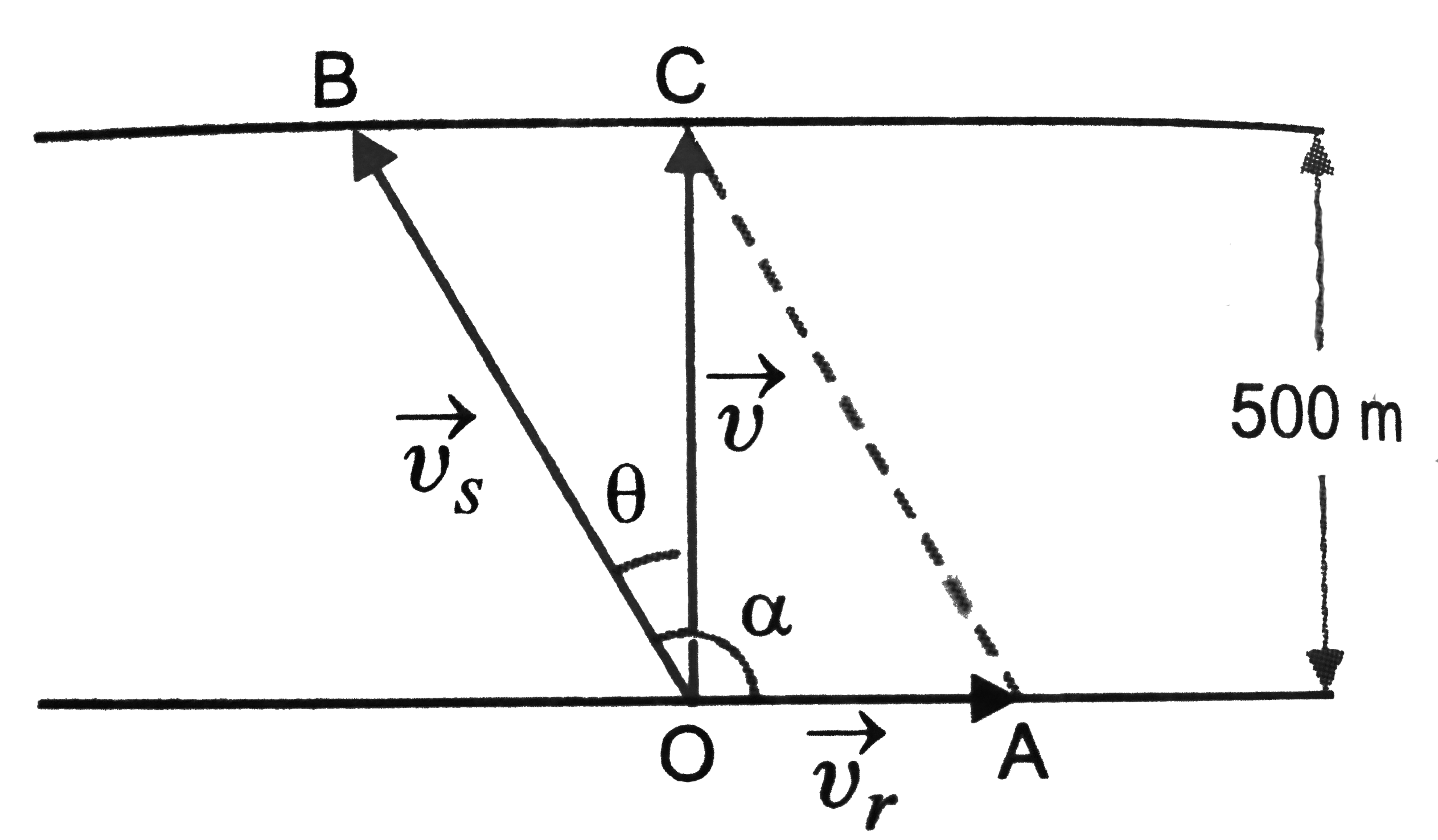(i) Refer to fig. 2(c ) 22,
velocity of river `=4 km h^(-1) =(OA)`
Velcity of swinmmer in still water
`v_(s0 =8 km h^(-10 =(OB)`
The swimmer will cross the river straitght if the resultant velocity `vec v of vec v_(r) and vec v_(s) ` is perpendiculat to the bank fof the river, i.e., along `(vec OC)`. This will be possible if the swimmer groes upatream of the river along `OB`, making an angle `theta` with `OC`. In right `DeltaOCB`, sin `theta (NC)/(OB) =v_(r)/v_(s0 =4/8 =1/2 =sin 30^(00`
:. `theta =30^(00` (ii) Resultant velocity of the swimmer
`v= sqrt(v_(s)^(2) -v_(r)^(2)) =sqrt (8^(20-4^(2)) =sqrt 48 =4 sqrt 3 km h^(-1) =4 sqrt3 xx 5// 18 =1.92 m//s
(iii) Time taken to cross the river, `t=(width of river)/v =(500 m)/(1.92 ms^(-1)) =260.4 s`.

.